Samoyed
Published: Last updated: by Kyle J. Larson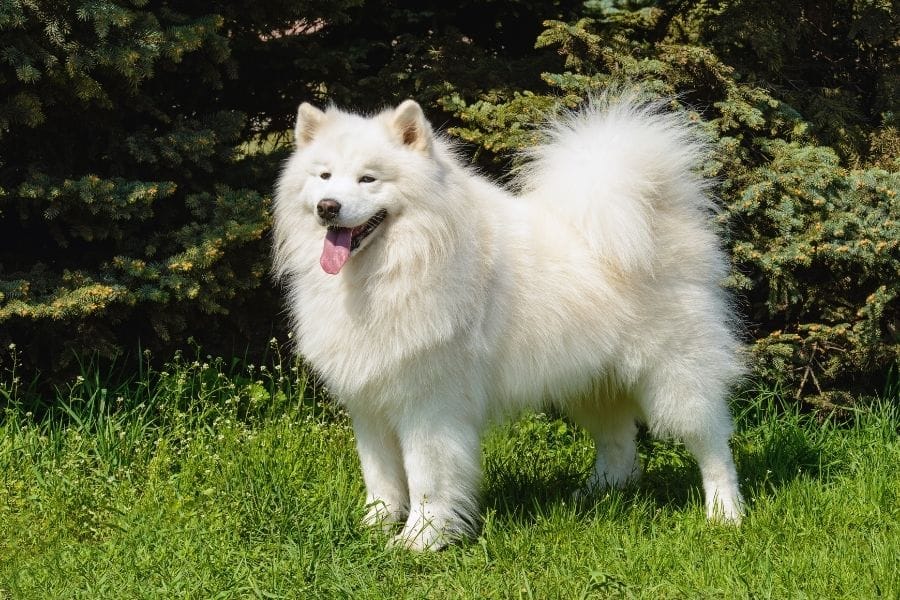
The Samoyed is a little smiling sled dog is a gentle, eager breed that was bred for hard work in the world’s coldest locations.
Average size and lifespan
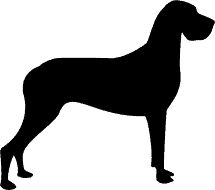
Weight: 35-65lbs
Lifespan: 11 - 13 Years
Behavior
- Affection
- Kid-Friendly
- Stranger-Friendly
- Dog-Friendly
- Barking Amount
Care
- Grooming Difficulty
- Shedding Amount
- Easy to Train
- Can Be Alone
- Exercise Need
Environment
- Cold Tolerance
- Heat Tolerance
- Apartment-Friendly
Samoyed Information
The Samoyed hails from Siberia, where temperatures of 60 below Fahrenheit are common. His distinct fluffy white coat is designed to protect him and keep him warm, and amazingly, his upturned mouth prevents drooling, meaning no icicles can form on his face!
Of all the dogs in existence today, the Samoyed is most like the primitive version, meaning there’s been no mixing of other breeds in his DNA. He is still the same adaptable but tough dog he was hundreds of years ago. As a family dog, he is friendly and sweet; reserved but not shy.
Samoyed History
The Samoyed dog breed has a long and intriguing history, with origins that stretch back centuries. The breed’s name is derived from the Samoyedic people, a nomadic tribe of reindeer herders who inhabited northern Siberia and parts of the Russian Arctic.
The Samoyed dogs were first bred by the Samoyedic tribe as companions and helpers, aiding with the herding and sled-pulling tasks of the nomadic lifestyle. The dogs were especially suited to these tasks due to their thick double coats of fur and strong, resilient frames.
The tribe prized their Samoyeds so much that they were often buried alongside their owners, a testament to their bond. The breed eventually spread to other parts of Russia and Europe, where explorers and fur traders used them. They became popular in Britain in the late 1800s and were first brought to the United States in 1906.
Today, Samoyeds are still beloved for their intelligence, gentle nature, and attractive white coats. They make excellent family pets and are just as happy trotting alongside a sled or performing tricks as they are lounging around the house. Regardless of their specific purpose, one thing is for sure: the Samoyed breed has undoubtedly made its mark on history!
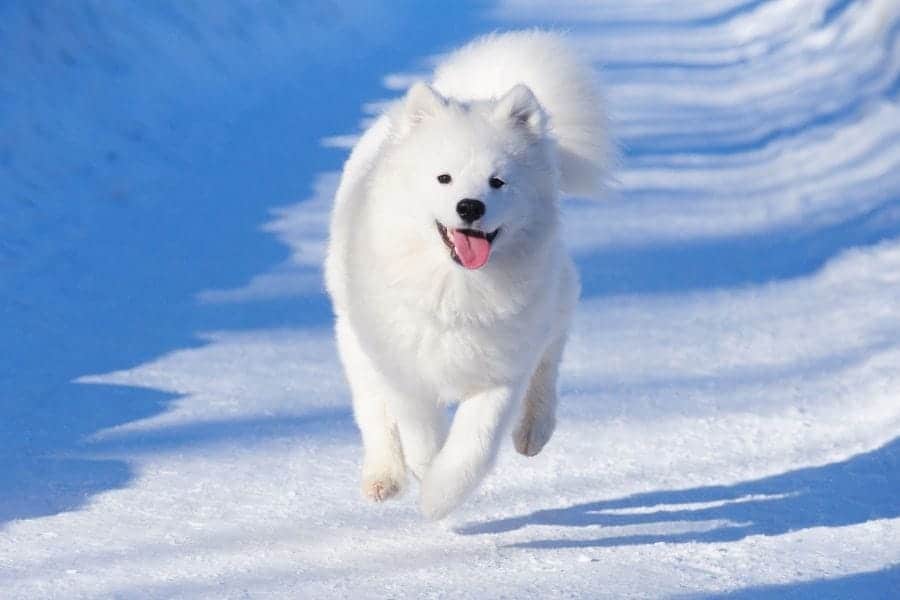
Samoyed Training and Temperament
The Samoyed breed is renowned for its intelligent and gentle nature, making them an ideal family pet. They are very easy to train, with an inherent eagerness to please and a natural affinity for commands. Samoyeds thrive when they are provided with consistent, positive reinforcement. They are highly receptive to verbal and nonverbal cues and respond well to clicker training.
The breed is known for its playful and exuberant temperament, often exhibiting an enthusiasm for life that is infectious. They are sociable and outgoing, making them excellent companions for children and adults alike. Samoyeds tend to be very loyal and devoted to their owners, forming strong bonds of trust and affection. They are also highly protective of their human family and can make excellent watchdogs.
Although Samoyeds can be quite boisterous, they are well-behaved and can be easily controlled with proper leadership and guidance. It is important to set boundaries and establish rules in order to ensure that the Samoyed knows its place in the home. With proper training, the Samoyed can be an obedient and well-mannered member of the family.
Samoyed Grooming
An important part of owning a beloved Samoyed is ensuring that their white coat remains glossy and beautiful. Fortunately, the breed is relatively low maintenance when it comes to grooming and only requires a few simple steps to keep it in tip-top shape.
Regular brushing and combing is essential for keeping the Samoyed’s double fur coat free of tangles and mats. During shedding season, they may require more frequent brushing in order to prevent the fur from becoming matted and clumped. If the coat becomes matted, it is best to take the Samoyed to a professional groomer for proper removal.
In addition to brushing, Samoyeds should receive regular baths in order to maintain their coat’s softness and shine. This can be done using a mild shampoo specifically designed for dogs, avoiding any shampoo that contains harsh chemicals. After the bath, it is important to thoroughly dry the coat, as this will help to prevent the fur from becoming matted.
Finally, regular nail trimming is essential for maintaining the Samoyed’s comfort and mobility. If the nails become too long, they can cause discomfort and put the dog at risk of injury. If you are unsure of how to properly trim a dog’s nails, it is best to take them to a professional groomer for assistance.
With these simple steps, your Samoyed can remain happy and healthy.
Are you getting this breed? Check out our list of Samoyed name ideas.
All dogs have their own personality and unique training, causing them to differ slightly from these breed stats. However, please let us know if we made an error in the stats, we appreciate your help!
Breed FAQs
Can Samoyeds be apartment dogs?
Samoyeds aren't ideal for apartments, but might be able to live there successfully if there are enough opportunities to find larger spaces nearby to play.
Can Samoyeds be left alone?
Samoyeds don't like being left alone for too long. They tend to show some symptoms of seperation anxiety when left apart from their owners for long periods of time.
Are Samoyeds good with kids?
Samoyeds do well with kids. As with any dog they should be monitored closely, they're unlikely to become aggressive.
Are Samoyeds friendly with strangers?
Samoyeds love other people and will tend to run up to them for affection. They quickly become great friends with anyone.
Do Samoyeds get along with other dogs?
Although Samoyeds will mostly get along with other dogs, they may have some issues. They can typically be dealt with by socializing them with other dogs.
Do Samoyeds bark a lot?
Samoyeds are known to bark quite often. This can be irritating for owners who aren't expecting it and they may require some training to limit the amount of barking.
Do Samoyeds shed a lot?
Samoyeds shed a medium amount. They will have seasonal shedding, but aren't terrible to clean up after.
Do Samoyeds need a lot of grooming?
Although Samoyeds require a medium amount of maintenance to keep their coats healthy. Simple tasks like brushing and bathing will suit this breed.
Do Samoyeds need a lot of exercise?
The Samoyed has a good amount of energy and will need to be exercised with some walks and play to keep them happy.
Are Samoyeds easy to train?
Typically, Samoyeds are easy to train. They enjoy the bonding process with their owner and are quick to learn.
Can Samoyeds handle cold weather?
If you live in a cold climate, Samoyeds will do extremely well and may even enjoy being outside in the chilly weather.
Can Samoyeds handle hot weather?
Be careful with Samoyeds in the heat. They don't do well in hot climates for long periods.
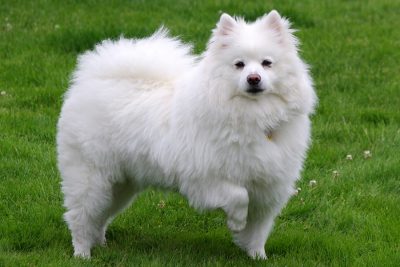
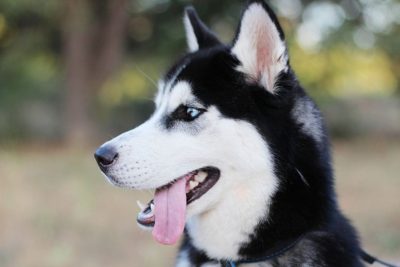
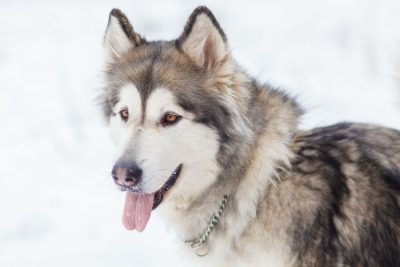
 Getting a New Dog?
Getting a New Dog?